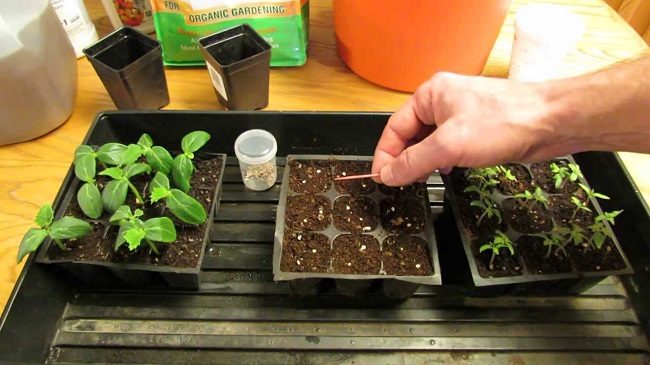
Starting tomato seeds indoors is a great way to get a jump start on the growing season. Here is a step-by-step guide that will help you get your seeds started and your garden off to a great start.
Step 1. Fill seed trays or pots with a good quality seed compost and water it well.
Step 2. Sow seeds about 1/4 inch deep and cover with soil.
Step 3. Keep the soil consistently moist and warm, around 70°F.
Step 4. Place the seed trays or pots in a bright, but not direct sunlight, location.
Once seedlings emerge, provide additional light, if necessary, by using inexpensive fluorescent grow lights. When the seedlings have at least two leaves, transplant them into larger pots. Continue to care for the seedlings until they are ready to be planted outside, hardening them off gradually to acclimate them to outdoor conditions.
Special Note: It is important to keep the seedlings moist, but not waterlogged, and to avoid letting them dry out completely.
What Type of Soil is Needed?
A good quality, well-draining soil is best for transplanting tomato seedlings. Use a rich, fertile soil mix that is designed for transplanting. A good quality seed starting mix, or a balanced potting soil will work well. Ensure that the soil has good drainage to prevent waterlogging and root rot. A soil mix that is too heavy or has poor drainage can cause problems for tomato seedlings.
Consider adding organic matter, such as compost or well-rotted manure, to the soil to improve its fertility and water-holding capacity. But be careful not to use poultry manure, as it is high in ammonia and can damage plants. If you have heavy clay soil, consider amending it with organic matter and sand to improve its drainage. Avoid using soil from your garden or yard as it may contain pathogens or pests that could harm your seedlings. By using the right soil for transplanting tomato seedlings, you can provide them with the best foundation for healthy growth and development.
How to Harden Off Tomato Plants Before Moving Them Outside
Hardening off tomato plants helps them acclimate to outdoor conditions and reduces transplant shock. Start the process a week or two before transplanting the plants outside. Move the seedlings to a sheltered location, such as a porch or a cold frame, for a few hours each day. Gradually increase the time they spend outside over the course of a week. Ensure that the seedlings are protected from wind, rain, and direct sunlight. Then gradually expose the seedlings to direct sunlight for longer periods each day.
At night, bring the seedlings back inside or cover them with a cloche or frost blanket to protect them from low temperatures. This article explains how to make a cloche from just about anything. Water the seedlings as needed to keep the soil consistently moist. After about a week of hardening off, the seedlings should be ready to be transplanted outside into their permanent location. Keep in mind that it is important to monitor the weather and to avoid exposing the seedlings to temperatures below 50°F or to frost.
For even more information read this article on how to transition plants to an outdoor garden.
Related Articles & Free Email Newsletter Sign Up
How to Deal With Blossom End Rot & Split Tomatoes
How to Grow Tomatoes in Containers




Comment here